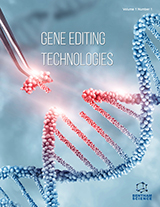Abstract
Shells, often small sculptures of extraordinary elegance, are a contin-uous source of inspiration since 20,000 years ago, when a Cro-Magnon man carved a stone to simulate the turns of a shell. Crossing the Mediterranean Car-dium Cultureto the Aegean culture, artists were mostly inspired by the sea and its inhabitants.
The spiral shape of the gastropods has been adopted by all the towers in the world, starting from the legendary Tower of Babel, while several architectonical styles (Manueline Style, Baroque, Rococo, Neo-Baroque, Liberty) used many forms which refer to marine organisms, and in particular to shells.In the Renais-sance, the shells of many molluscs (Nautilus,Argonauta, Pecten, Tridacna) be-come models of inspiration. Nautilusshell become a key element in jewellery too: the Nautilus cups,with gilded silver, gold, and semiprecious stones, will be-long forever to the history of art, thanks to the genius of Cellini. At the beginning of 1600, shells were one of the most common subjects, especially in Flemish paintings, and were sometimes protagonists in 19thcentury romantic paintings.
Even some 20thcentury architects were inspired by shells, reinterpreting the eternal forms of Nature, according to different philosophies and approaches. We have to remember Leonardo da Vinci, Antoni Gaudí, Le Corbusier, Frank Lloyd Wright and Jørn Utzon. As architectural elements, shells also became important during the 16th century, especially in the implementation of the nymphaeum, fol-lowing the classical tradition of a peaceful place consecrated to nymphs.
Keywords: Aegean art, Aphrodite, Argonauta, Art Nouveau, Baroque, Botticelli, Cellini, Cardium culture, El Caracol, Church of Saint-Sulpice, Flemish art, Foun-tain of Trevi, Gaudí, Hippopus, Le Corbusier, Leonardo, Manueline style, mol-luscs, Nautilus, Neo-Baroque, nymphaeum, Pecten, still life pictures, Renaissance, Tower of Babel, Tridacna, Utzon, Wright.






















